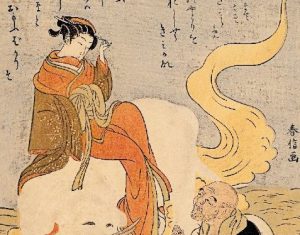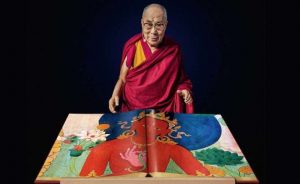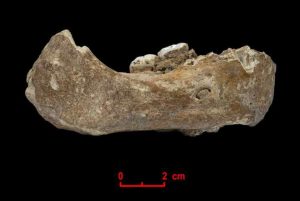In her newest book How We Live Is How We Die (Shambala 2022), the renowned Buddhist nun and Dharma teacher Pema Chödrön sets out to help us all with the one guarantee we are given in life, and the one so many of us fear: death.
Why do I think this is a worthwhile read?
I think that the wisdom shared here is suitable not only for those who are already proficient in contemplating these concepts—insightful reminders for the practicing Buddhist; most of all, I think this book can be extremely helpful for those new to Buddhism—those who have an interest and wish to learn more about practical approaches to living and dying from a Buddhist perspective.
Pema Chödrön was a New York City baby, born Deirdre Blomfield-Brown in 1936. Many years later, in 1974, during a trip to England, His Holiness the 16th Karmapa ordained Deirdre as a novice nun, and thus was born Ani Pema Chödrön, the “bodhisattva warrior” who would go on to become a teacher and spiritual guide to so many around the world.
Pema Chödrön’s life before her spiritual journey was really quite normal: married young, schooled, worked, started a family, divorced by her mid-20s, remarried, divorced again.
Reductive? Sure. But these are common bullet points for so many women. And that, I believe, is part of Pema Chödrön’s appeal: her experiences are so utterly relatable that she feels . . . human.
Pema Chödrön’s responses to these commonplace, albeit often very tough and stressful, experiences of relationships falling apart may have been extreme from some people’s perspective—seeking as many therapies as possible, wherever that journey took her, especially given that she had children—but it was clearly all part of her destiny story, which placed her on the spiritual track, and from which so many people would ultimately benefit.
She met and trained under many teachers, notably Chögyam Trungpa Rinpoche, who would become her root guru. And while Trungpa Rinpoche came and left with a legacy of controversy, he clearly disseminated profound teachings during his time. His radical approach, not a million miles away from some of the Zen masters of old, clearly caught the imaginations of American seekers at the perfect time in modern history and transformed many lives. Trungpa Rinpoche’s approach to art, science, and explaining the highest teachings in simple, accessible ways is something I hold in deep respect—myself having grown up with Geshe Namgyal Wangchen, who approached these latter points in similar, almost secular ways, although without the “crazy wisdom” part. Along with other teachers, of course, Pema Chödrön refers to Trungpa Rinpoche’s teachings throughout her new book.
And it is in the almost secular aspect that Pema Chödrön finds a real sweet spot in this book. This is definitely a Buddhist book, but being a Buddhist is far from a prerequisite for reading and learning from the teachings shared within. I have spent many years researching the brain and consciousness and associated phenomena, and the language that we use to explain the process of dying is interesting to me. Some may argue that the series of colors we experience during death are merely a sequence of blood and chemicals flooding the grey matter within our skull, but in Buddhist terms it’s all part of the process of “inner dissolution.”
Some have suggested that an abundance of the psychoactive chemical DMT is released during the death process. DMT, sometimes known as the “spirit molecule” by proponents of mind-expansion, offers similar experiences of dissolution such as vivid colors and visions of strange, often frightening beings. So, potentially, these chemical and biological processes and dissolution are aspects of one and the same phenomenon. We can also experience ultra-heightened awareness, which, if we can pay attention, as Pema Chödrön urges us, can liberate us from earthly attachments. We know that this moment has been given importance throughout recorded history. The ancient Egyptians believed that how we live directly impacts how we experience the afterlife, and that during the moments of judgment at the time of death, we have an opportunity to liberate ourselves from our ill deeds (lest our heart be consumed by the goddess Ammut and our essential spirit be lost forever)!
I have long been interested in the nature of our kleshas—the negative patterns hardwired into our minds—and the work of the amygdala, which will attempt to keep us safe at all costs, even if it may, ironically, be to our detriment. And this too is very much part of our spiritual practice during life: to be aware of the distinction between the brain’s instinctive functions and what is actually healthy for us. Here, Pema Chödrön gives us some very practical and helpful tools to transcend these hindrances and to expand into the clear sky of pure consciousness.
One day, many years ago, I was called out by one of my teenage children when I assumed my usual habit of reminding her of the suffering of others to help her maintain a perspective on her own life. She reminded me that she felt like this negated her own subjective experience. This stopped me in my tracks. She was right. And over the years, I have worked on redressing this—not always successfully I might add. Yet Pema Chödrön reminds us that while we need to maintain the former perspective, it is not merely an act of “comparison.” As members of the human species, we all feel the same range of emotions and ultimately seek not to feel pain, and bearing this in mind can help us to become more compassionate to ourselves and to others.
Of course, if we are all ultimately interconnected aspects of a single consciousness, then each time we take the responsibility to evolve our emotional reactions and open our hearts to others—who are simply manifestations of our ourselves—then we can hope to bring humanity a little closer to awakening our own cosmic selves.
In this light, How We Live Is How We Die covers various aspects of living and dying with clearly explained practices that we can apply, and well-defined terms that may feel complex upon first learning.
All in all, this book provides a nice outline of Buddhist concepts related to living with an eye firmly fixed on the destiny that we will all come to face, but colored in just enough to give form and context for those already familiar with these ideas. It will bring comfort to some readers and provide homework and spiritual practice for others. Ultimately, it will hopefully bring more mindful awareness of impermanence to all of us. It behoves us to pay attention to our living practices because one day our heart will stop, and the question will then be: are you ready or not?
References
Chödrön, Pema. 2022. How We Live Is How We Die. Boulder, CO: Shambala Publications.
Related features from BDG
Book Review: Meaningful Life Fearless Death: Spiritual Insights on Death, Dying, Hospice Care and Grief Counseling
Book Review: Threads of Awakening: An American Woman’s Journey into Tibet’s Sacred Textile Art
Book Review: Rebirth: A Guide to Mind, Karma, and Cosmos in the Buddhist World
















We Die the Way We Live.- by Father Daniel Berrigan 1980’s